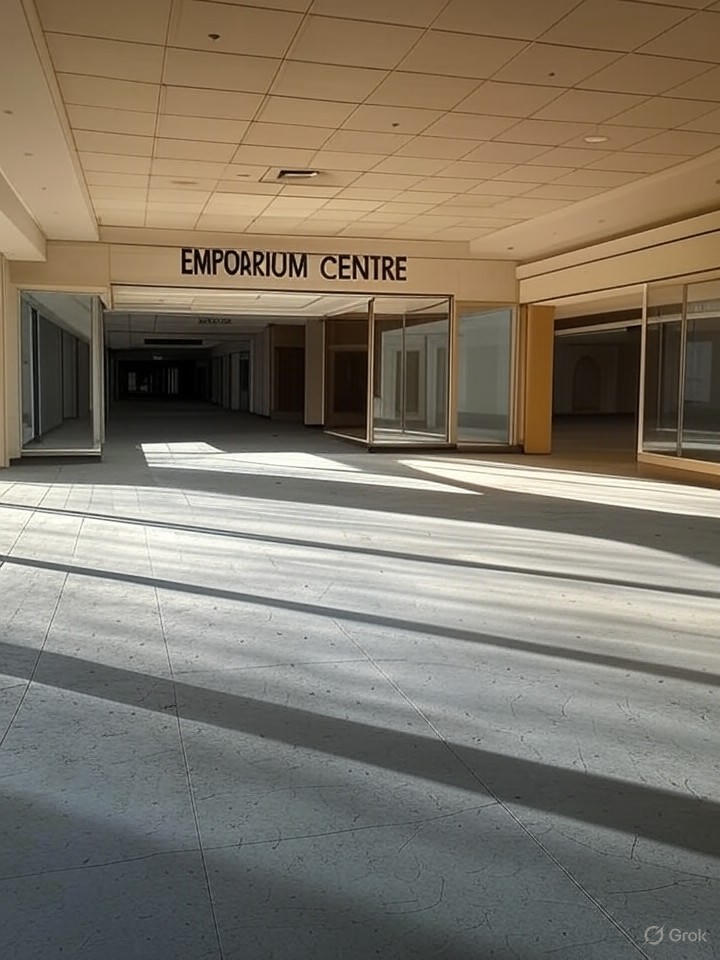San Francisco’s once-thriving downtown retail hub, the San Francisco Centre—formerly known as the Westfield San Francisco Centre—continues its precipitous decline, emblematic of broader challenges facing urban commercial real estate in the post-pandemic era. What was a bustling nine-story complex drawing millions of shoppers annually has devolved into a largely vacant shell, with recent closures accelerating the exodus of tenants. According to a report in the San Francisco Chronicle, the mall has lost another half-dozen eateries in recent months, including popular spots like Marugame Udon and a Starbucks outlet, leaving its food court a ghost town and further eroding foot traffic.
This wave of departures follows the mall’s largest remaining retailer, Zara, pulling out in June 2025, as detailed in a CoStar analysis. The Spanish fashion giant’s exit underscores a pattern: high-profile anchors like Nordstrom and Macy’s vacated years earlier, triggered by a confluence of factors including reduced office worker presence, rising crime perceptions, and shifting consumer habits toward online shopping. Data from the mall’s official site, shopsanfranciscocentre.com, still promotes it as a “one-stop destination,” but on-the-ground realities paint a starkly different picture, with occupancy rates plummeting to around 20% based on recent estimates.
The Auction and Ownership Turmoil
The property’s fate took a dramatic turn when its former owner, Unibail-Rodamco-Westfield, walked away in 2023, citing unsafe conditions and declining sales in a move covered extensively by CNN. This abandonment led to a foreclosure process, culminating in a planned auction initially set for November 2024, as reported by The San Francisco Standard. The auction, tied to $625 million in defaulted loans, highlights the mall’s plummeting value—from over $1 billion a decade ago to a fraction of that today, per San Francisco Examiner coverage.
Insiders in the commercial real estate sector point to this as a case study in urban retail’s vulnerabilities. The mall, renamed Emporium Centre San Francisco after Westfield’s departure, now faces an uncertain future amid proposals to repurpose parts of it for housing. A March 2025 pitch by the ex-owner to sell adjacent office buildings for residential conversion, as outlined in another San Francisco Chronicle piece, suggests a pivot away from pure retail, potentially injecting new life into the area but requiring significant public investment in infrastructure.
Economic Ripple Effects and Community Sentiment
The mall’s downturn has rippled through the local economy, exacerbating job losses and reducing tax revenues for a city already grappling with budget shortfalls. Posts on X (formerly Twitter) from users like local journalists and residents reflect growing frustration, with one recent thread noting the mall’s collapse as a symbol of neglected urban issues such as street squalor and reduced vehicular access on Market Street. This sentiment echoes a 2024 Reddit discussion on r/deadmalls, where users described the space as “80% empty” despite its architectural beauty, per a post at reddit.com.
Broader analyses, including a New York Times feature contrasting the downtown mall’s failure with the thriving suburban Westfield Valley Fair, attribute the reversal to remote work trends and safety concerns that have deterred visitors. City officials have floated revitalization ideas, but critics argue these overlook root causes like permissive policies on homelessness and petty crime, as highlighted in X posts from accounts tracking San Francisco’s decline.
Prospects for Revival Amid Challenges
Looking ahead, potential buyers at the auction could steer the property toward mixed-use development, blending retail with offices, entertainment, or even educational spaces—a model that has revived similar sites elsewhere. Yet, as a May 2025 San Francisco Examiner article noted, with more stores like a jewelry outlet shuttering, the tenant base is critically thin, making any turnaround a high-stakes gamble.
For industry insiders, the San Francisco Centre’s saga serves as a cautionary tale: urban malls must adapt to evolving consumer behaviors and city dynamics, or risk obsolescence. While some X users express optimism about potential housing conversions alleviating the city’s affordability crisis, others warn of the infrastructural burdens, such as water and sewage upgrades, that could strain taxpayers. As of August 2025, the mall stands as a hollow monument to past vibrancy, its spiral atrium echoing with emptiness rather than shopper chatter, awaiting a bidder bold enough to reimagine its role in a changing downtown.




 WebProNews is an iEntry Publication
WebProNews is an iEntry Publication